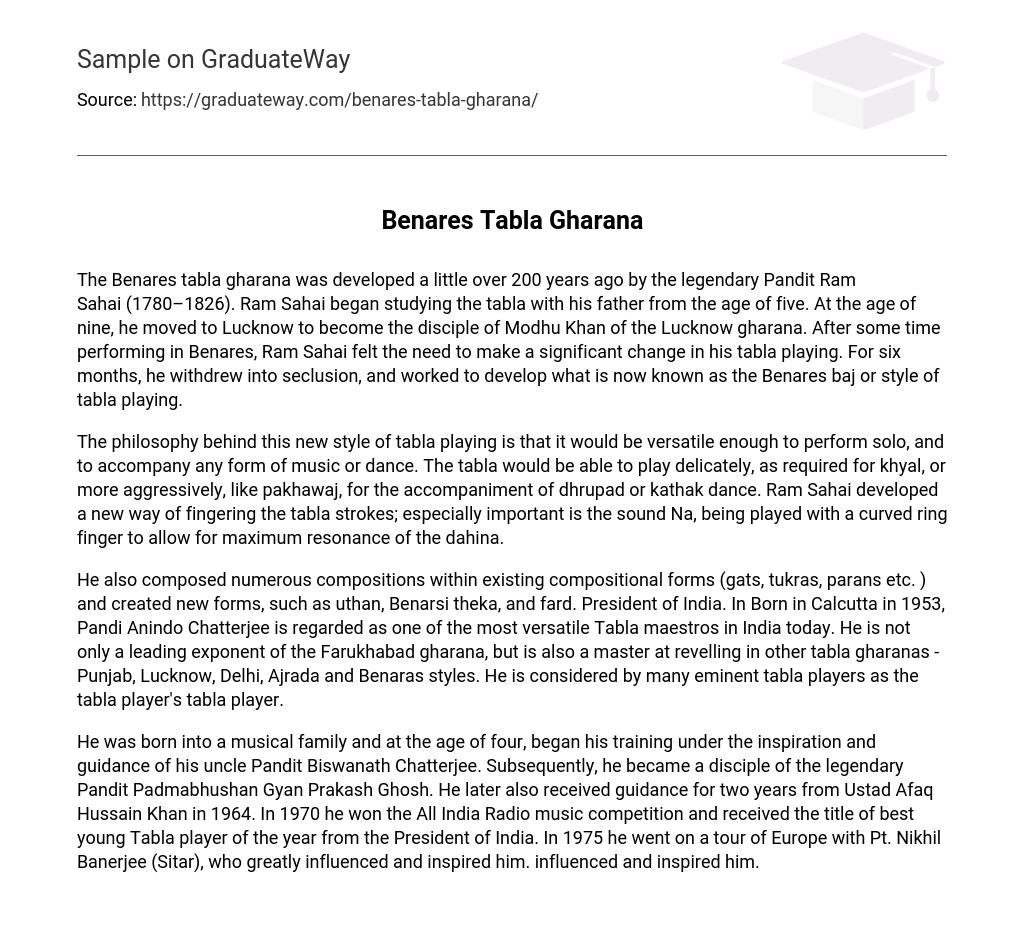The Benares tabla gharana was established approximately 200 years ago by Pandit Ram Sahai (1780–1826). At the young age of five, Ram Sahai began learning tabla from his father. By nine years old, he moved to Lucknow to study under Modhu Khan of the Lucknow gharana. After gaining experience performing in Benares, Ram Sahai felt the urge to make a significant modification in his tabla playing. He secluded himself for six months and dedicated his time to crafting what is currently recognized as the Benares baj or style of tabla playing.
The philosophy behind this new style of tabla playing is to be versatile enough for solo performances and to accompany any form of music or dance. The tabla can play delicately for khyal or more aggressively like pakhawaj for dhrupad or kathak dance. Ram Sahai invented a new fingering technique for the tabla strokes, with particular emphasis on the Na sound. The Na is played with a curved ring finger to maximize the resonance of the dahina.
Pandi Anindo Chatterjee, the President of India, has composed numerous compositions within existing compositional forms such as gats, tukras, and parans. He has also created new forms like uthan, Benarsi theka, and fard. Born in Calcutta in 1953, he is regarded as one of the most versatile Tabla maestros in India today. Chatterjee is not only a leading exponent of the Farukhabad gharana but also excels in other tabla gharanas including Punjab, Lucknow, Delhi, Ajrada, and Benaras styles. Many eminent tabla players consider him as the tabla player’s tabla player.
Born into a musical family, he began his training at the age of four under his uncle, Pandit Biswanath Chatterjee. Later, he became a disciple of the renowned Pandit Padmabhushan Gyan Prakash Ghosh. In 1964, he also received guidance from Ustad Afaq Hussain Khan for two years. In 1970, he won the All India Radio music competition and was awarded the title of best young Tabla player by the President of India. Additionally, in 1975, he embarked on a European tour with Pt. Nikhil Banerjee (Sitar), who greatly influenced and inspired him.





